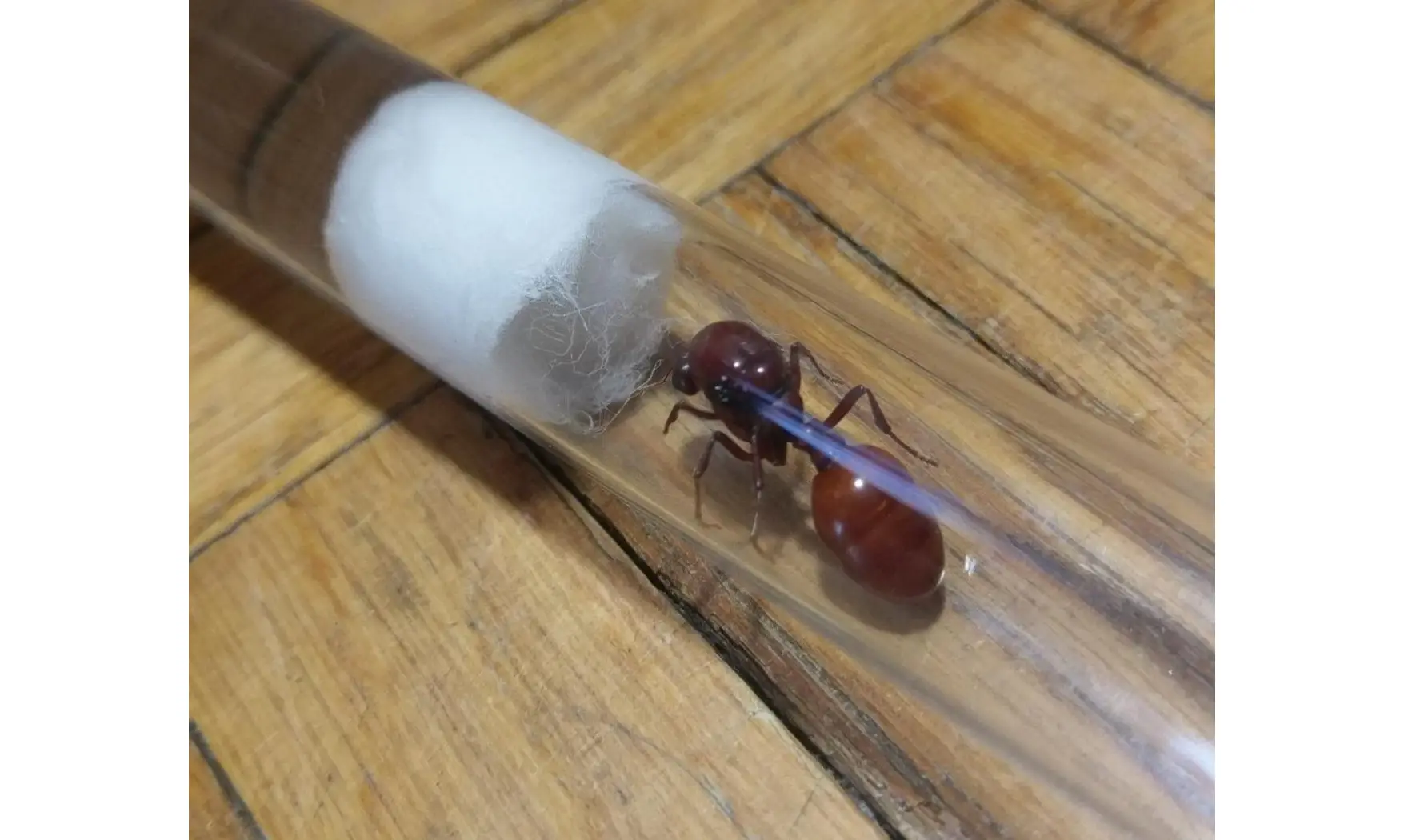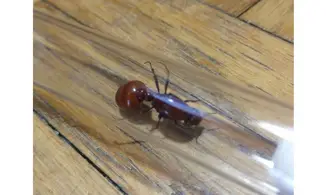



Carebara castanea
Reference : CCFOUR-100
49.90€
0 in stock
Latin name: Carebara castanea
Taxonomy: Subfamily: Myrmicinae Tribes: Solenopsidini
Breeding level: Experienced
Geographical distribution: India, Southeast Asia
Habitat: Rainforest
Colony form: Monogyne
Queen: Size: 20 - 22mm Color: Orange-brown
Workers: Size: 2 - 2.5mm Color: Yellow orange
Major: No
Male: Size: 12mm Color: Orange-brown
Food: Honeydew and many small insects like mealworms, fly, mosquito, crickets etc ...
Humidity: Hunting area: 50 - 70% Nest: 50 - 70%
Temperature: Hunting area: 20 - 28 ° C Nest: 24 - 28 ° C
Hibernation: No
Nest type: Plaster tube with added soil during foundation and then Terra
Description: Carebara species feed in the wild mainly with termites. The population can become extraordinarily large. The difference in size between the queen and the workers is also very impressive. The nests of this species are very large and on the bottom are large scale structures / structures that look like a ball. They can not be stored in a simple test tube, but it must be filled with a moist substrate.
Development: Beginning of the rainy season
Foundation: Set in a cloister (without food) Development: 45 days from egg to worker (depending on temperature)
Size of the colony: Several tens of thousands of individuals, the queen can reach the age of 15 years.
Taxonomy: Subfamily: Myrmicinae Tribes: Solenopsidini
Breeding level: Experienced
Geographical distribution: India, Southeast Asia
Habitat: Rainforest
Colony form: Monogyne
Queen: Size: 20 - 22mm Color: Orange-brown
Workers: Size: 2 - 2.5mm Color: Yellow orange
Major: No
Male: Size: 12mm Color: Orange-brown
Food: Honeydew and many small insects like mealworms, fly, mosquito, crickets etc ...
Humidity: Hunting area: 50 - 70% Nest: 50 - 70%
Temperature: Hunting area: 20 - 28 ° C Nest: 24 - 28 ° C
Hibernation: No
Nest type: Plaster tube with added soil during foundation and then Terra
Description: Carebara species feed in the wild mainly with termites. The population can become extraordinarily large. The difference in size between the queen and the workers is also very impressive. The nests of this species are very large and on the bottom are large scale structures / structures that look like a ball. They can not be stored in a simple test tube, but it must be filled with a moist substrate.
Development: Beginning of the rainy season
Foundation: Set in a cloister (without food) Development: 45 days from egg to worker (depending on temperature)
Size of the colony: Several tens of thousands of individuals, the queen can reach the age of 15 years.

